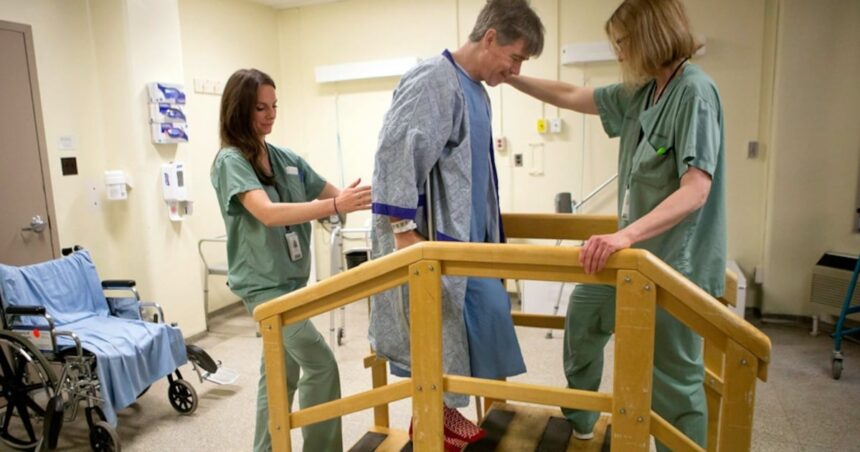Toronto’s healthcare landscape is shifting before our eyes, as Ontario pushes forward with its controversial plan to move thousands of hip and knee replacement surgeries from hospitals to private clinics. I’ve spent the past week speaking with healthcare providers across the city to understand what this means for patients waiting for these life-changing procedures.
The Ford government recently announced it’s seeking proposals from independent health facilities to perform up to 14,000 additional publicly funded orthopedic surgeries annually. This represents about 20% of all such procedures currently performed in Ontario hospitals.
“We’re facing unprecedented surgical backlogs,” Dr. Sarah Mikhail, an orthopedic surgeon at Toronto Western Hospital, told me. “The pandemic created a perfect storm, and now we have patients waiting far too long for procedures that dramatically improve quality of life.”
According to Ontario Health data, more than 52,000 people are currently waiting for hip or knee replacements across the province, with average wait times exceeding 7 months in some regions of the GTA.
Health Minister Sylvia Jones has emphasized that these surgeries will remain covered by OHIP. “Patients will never pay with their credit card,” Jones stated at a press conference last Thursday. “They will continue to pay with their health card.”
But critics, including the Ontario Health Coalition, warn this expansion could drain vital resources from the public system. “This isn’t about adding capacity; it’s about redirecting public dollars to private operators,” said Natalie Mehra, the coalition’s executive director, during our conversation at her downtown office.
Walking through Kensington Market yesterday, I spoke with Janet Kim, 68, who’s been waiting nine months for a knee replacement. “I don’t care where they do it at this point,” she said, wincing as she navigated the crowded sidewalk. “I just want to walk without pain again.”
This initiative builds upon existing programs where private clinics already handle some publicly funded procedures. The Cleveland Clinic in Toronto and Clearpoint Health Network facilities, for example, have been performing cataract surgeries under OHIP for years.
The move aligns with broader healthcare reforms under Bill 60, which has expanded private delivery of publicly funded services. The government maintains this hybrid approach will reduce wait times while maintaining the principles of universal access.
“What matters to patients is timely care, not who owns the building where they receive treatment,” explained Dr. Michael Gardner, chief of surgery at a midtown hospital. “But we need to ensure proper oversight and quality standards are maintained across all settings.”
A visit to Don Mills Surgical Centre, one of the existing private facilities performing OHIP-covered procedures, revealed a modern, efficient operation. Staff there highlighted faster turnover times between surgeries compared to hospitals, which often handle more complex cases alongside emergency care.
Healthcare economists point out that specialized clinics focusing exclusively on routine procedures like joint replacements can operate more efficiently. “It’s like comparing a boutique shop to a department store,” explained Dr. Emily Chen, a health policy researcher at the University of Toronto. “Specialization drives efficiency, but it doesn’t address the underlying staffing challenges.”
Indeed, critics worry these private clinics will compete for the same limited pool of healthcare workers, potentially luring staff away from hospitals with better working conditions or compensation.
The Ontario Nurses Association has expressed particular concern about this aspect. “We already have a nursing shortage crisis,” said Patricia Thompson, a registered nurse with 22 years of experience. “If these clinics poach staff from hospitals, we’re just shifting the problem, not solving it.”
For Torontonians awaiting surgery, the debate often feels academic. “I’ve watched my mother’s world shrink as she waits for her hip replacement,” said Marcus Lee, whom I met at a community health forum in Scarborough. “She used to garden, visit friends, volunteer. Now she barely leaves her apartment.”
The government expects to select successful clinic applicants by early 2024, with new facilities operational later that year. The expansion will focus initially on communities with the longest wait times, including several Toronto neighborhoods.
Whether this approach will significantly reduce surgical backlogs remains to be seen. What’s clear is that Ontario’s healthcare system continues to evolve in response to mounting pressures, with Toronto once again serving as the testing ground for innovations that may eventually spread across the country.
As I navigate Toronto’s healthcare landscape daily, I’ll continue monitoring this developing story and what it means for our community’s access to these essential procedures.







